Peter Rose, Erik Bünger and Katarina Zdjelar
Re-Discovery IV is an exhibition on the performativity of voice and language, the inauthenticity and uncanniness of speaking, voice as a political speech act, and language as performative utterance.
We are acting through language – but how does language act through us? The artists Peter Rose (b. 1948, lives and works in New York and Philadelphia), Erik Bünger (b. 1976, lives and works in Stockholm and Berlin) and Katarina Zdjelar (b. 1979, lives and works in Rotterdam) address the uncanny, irritating or comical moments produced by the human voice and language. In their works the emotional, social and political potential of the voice becomes directly experienceable: How is the voice connected to the body and identity of the individual? What happens when the spoken word detaches itself from the speaker, or the text from its meaning? What if the voice no longer belongs to the body from which it emanates? Who speaks when we are speaking?
The artists are probing the emotional and spiritual effect of the vocal power and word games, and are playing with shifts of meaning and identity. While doing so, they also experiment with the various media used to record, reproduce or silence the voice.
Works presented:
Erik Bünger, The Empire Never Ended, 2013
Score (12 pages), video recording from a live performance in Dortmund, 9:00 min.
The Empire Never Ended is a transcription of a man speaking in tongues on a recording from 1948. He is believed to be in a state of trance and his vocalizations haven’t been recognized as belonging to any known human language. We know nothing about the mother tongue of the speaker, nor do we know anything about his particular faith. In a live performance musician/s follow the voice as closely as possible. The piece operates at the intersection where complete control and complete lack of control coincide. A musician will have to summon all his/her precision and concentration. At the same time he / she will have to put these very same abilities in the hands of a power beyond any human control. (Erik Bünger)
The Empire Never Ended was originally written for Ensemble Modern and commissioned by the BHF-Bank-Stiftung for Frankfurter Positionen 2013. The piece is based on the recording ‘Banta Trance Speech’ found on the CD release: Occult Voices – Paranormal Music, Recordings of unseen Intelligences 1905 – 2007 published by Thomas Knoefel und Andreas Fischer, Cologne, 2007. The video documents the live performance in the context of the exhibition His Master’s Voice (HMKV), Pauluskirche, Dortmund, May 22th, 2013, Musician: Jan-Filip Ťupa (Cello).
//
Erik Bünger, Written on Tablets of Flesh', 2014-2015
Four artefacts: Phonautogram, HAL replica, HMS needle box, Wicked Bible
//
Erik Bünger, The Girl Who Never Was, 2014
Single channel video, color/sound, projection, 59:07 min.
The Girl Who Never Was is the third and final part in a trilogy began with A Lecture on Schizophonia and continued in The Third Man. The project exists both as a lecture performance and as an independent video work.
In 2008 an American researcher rediscovers the lost traces of the first recorded voice ever: the 148-old voice of a little girl singing the French lullaby ‘Au Clair de la Lune’. One year later another researcher experiments with the playback speed and manages to prove that what the fragment actually contains, is the voice of a full-grown man. This exact same lullaby is the song sung by the artificial intelligence HAL in the French version of Stanley Kubrick’s ‘2001 A Space Odyssey’. As HAL dies his voice performs precisely the same glissando as the voice of the non-existent girl: a high-strung, insistent voice is gradually slowed down into a deep, sleepy and harmless one. The work uses these two voices as coordinates, and explores how a particular insistency, pertaining to the voice alone, makes it the vehicle for certain kinds of inexistencies, as they make their way into our world. The more we try to shut her voice out, the more persistent her song becomes. (Erik Bünger)
The Girl Who Never Was is a coproduction with the Impakt Foundation, Utrecht in the framework of Impakt Works 2013 and has been made possible with the support of the City of Utrecht; the Mondriaan Foundation.
On Friday, May 29th, 2015, Erik Bünger presents his lecture performance The Girl Who Never Was (2014) in the context of Videoart at Midnight at Kino Babylon (Rosa-Luxemburg-Platz).
//
Peter Rose, The Pressures of the Text, 1983
Single channel video, color/sound, monitor, 17:00 min.
Peter Rose’s video parodies the cryptic and often self-referential lingo pervading the intellectual debate in the humanities, more specifically art criticism. We see the artist himself giving a talk in a setting reminiscent of educational television: his corduroy jacket, full beard, glasses and well-worded statements suggest academic expertise. Rose deconstructs the bloated jargon of scientific discourse as an artful but shallow linguistic exercise about nothing. Towards the end, he is clearly struggling with the words, to the point where his address, despite sounding rational and logical, drifts off into a fantasy idiom. (Fabian Saavedra-Lara)
//
Katarina Zdjelar, The Perfect Sound, 2009
Single channel video installation, color/sound, projection, 14:30 min.
The video shows a middle-aged man repeatedly uttering single syllables and a young man mimicking him. The resulting chant, which is reminiscent of early language development, is instilled with a deeply human quality. The scene was filmed during an accent-removal class for immigrants in Birmingham – a city paradoxically known for its strong accent. In Great Britain the accent is not only an indicator of one’s ethnic origin, but also one of the remaining markers of class. By showing an attempt to create a kind of neutrality through language training, The Perfect Sound highlights a particular facet of cultural integration. (Inke Arns)
//
Katarina Zdjelar, Shoum, 2009
Single channel video, color/sound, monitor, 7:00 min.
Zdjelar’s video work Shoum starts with a blank, we see no image, but hear the sound of the 1984 Tears for Fears mega hit ‘Shout’. Then we see an iPod, a sheet of paper and the hands of two men from Belgrade, holding pens. Over the course of the next seven minutes we see how the two attempt to decipher the lyrics of ‘Shout’ as though they contained a coded message. This is in fact the case, considering that these men speak no English. Thus they phonetically transcribe what they hear, based on their own vocabulary and capacity to vocally interpret the unfamiliar. ‘Shoum Shoum Lajdi o Lau’, they write and sing, in a strange invented language somewhere between phonetic transcription, Serbian, and English, as ‘Tears for Fears’ sing ‘Shout, shout, let it all out’. We witness how through errors and deformations an entirely ‘new language’ is being created, which intriguingly relates to the original in a shifted way, namely acoustically. As quickly becomes clear, meaning here is less a matter of understanding than of processing and assimilation. Cut off from the lingua franca of a globalized world, with perseverance these two men create something of their own that lies between the foreign and the familiar. The work thus opens up space for critique by embracing the artist Mladen Stilinovic’s statement “An Artist Who Cannot Speak English Is No Artist” and its implicit antithesis. (Katarina Zdjelar)
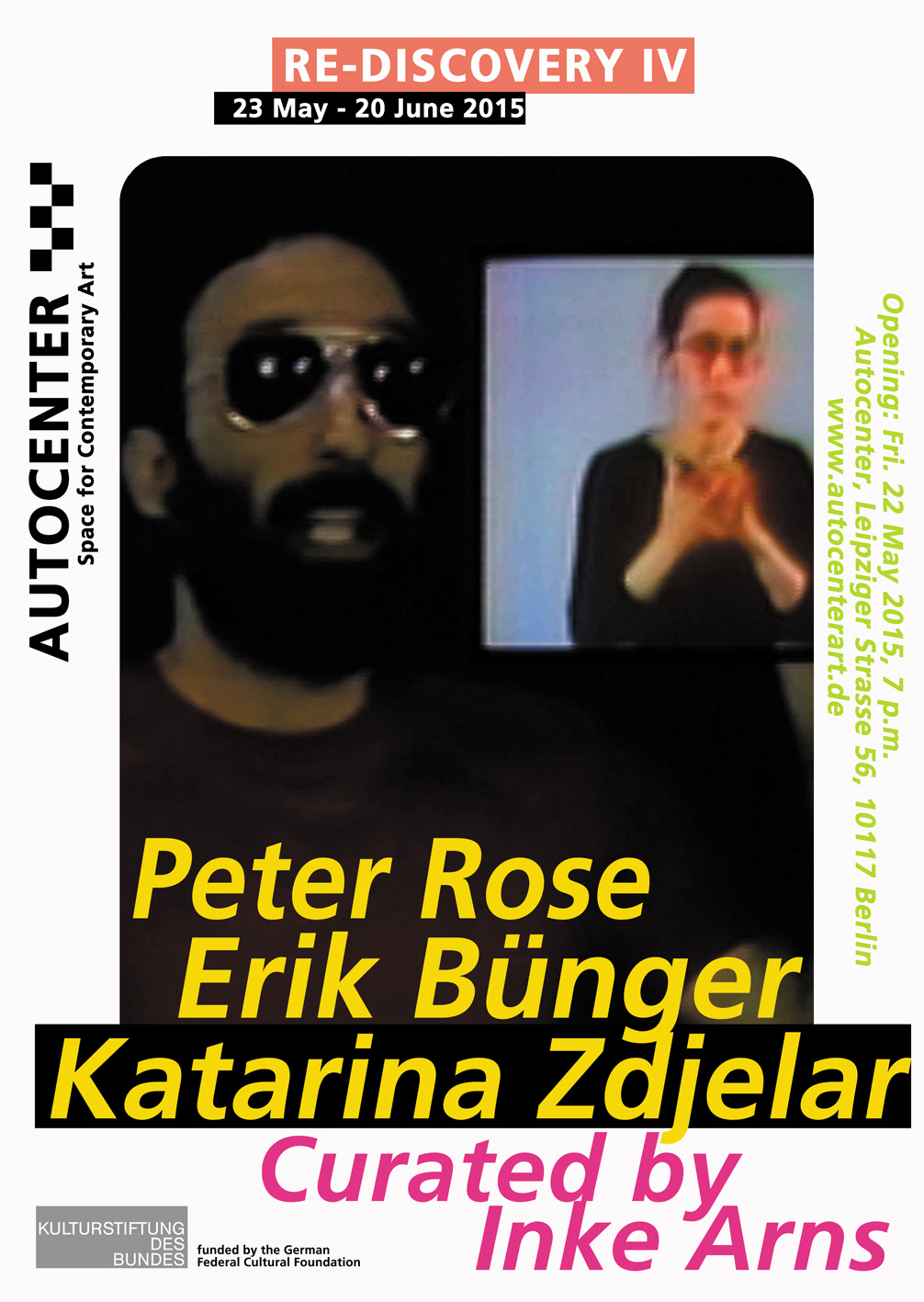
Invitation 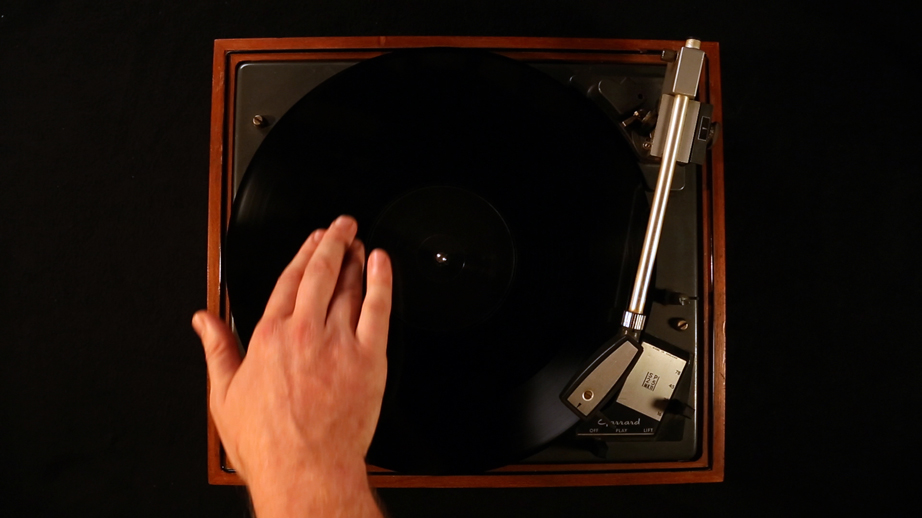
Erik Bünger, The Girl Who Never Was, (video still), 2014 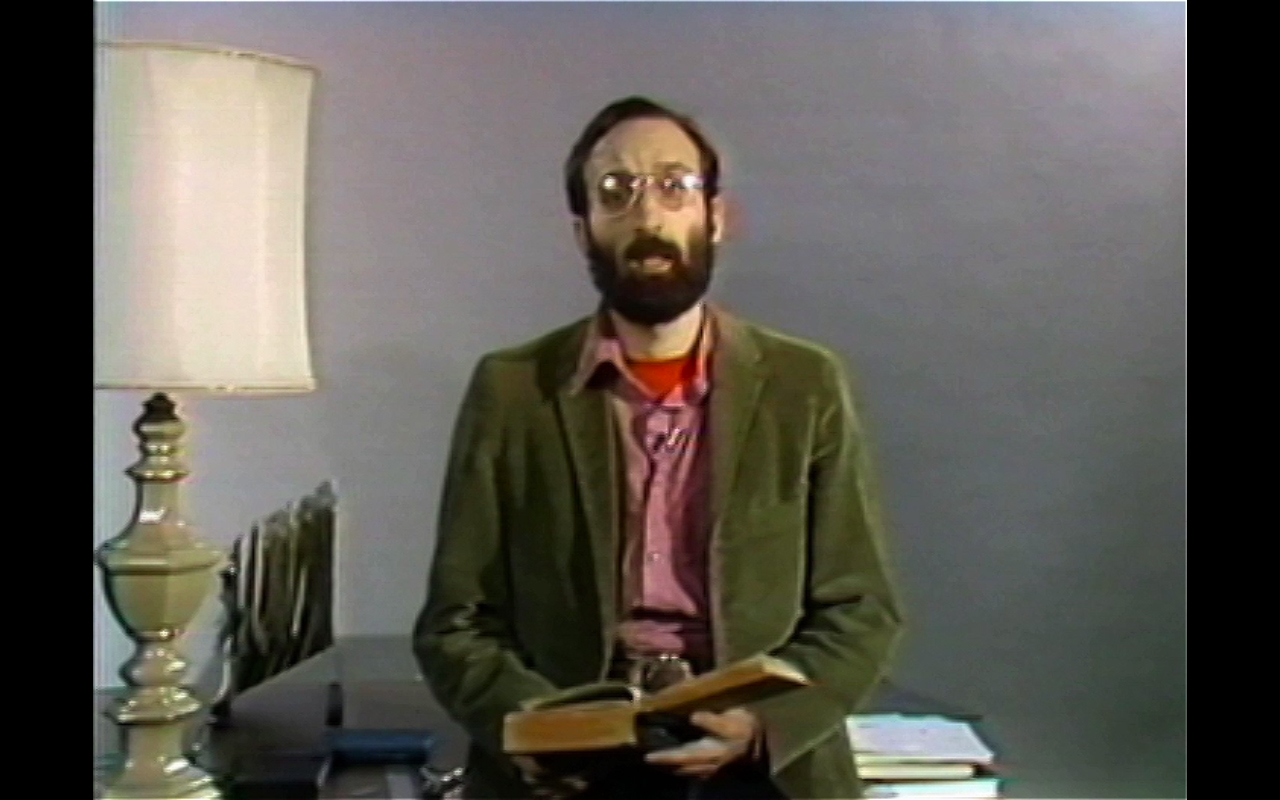
Peter Rose, The Pressures Of The Text, (video still), 1983 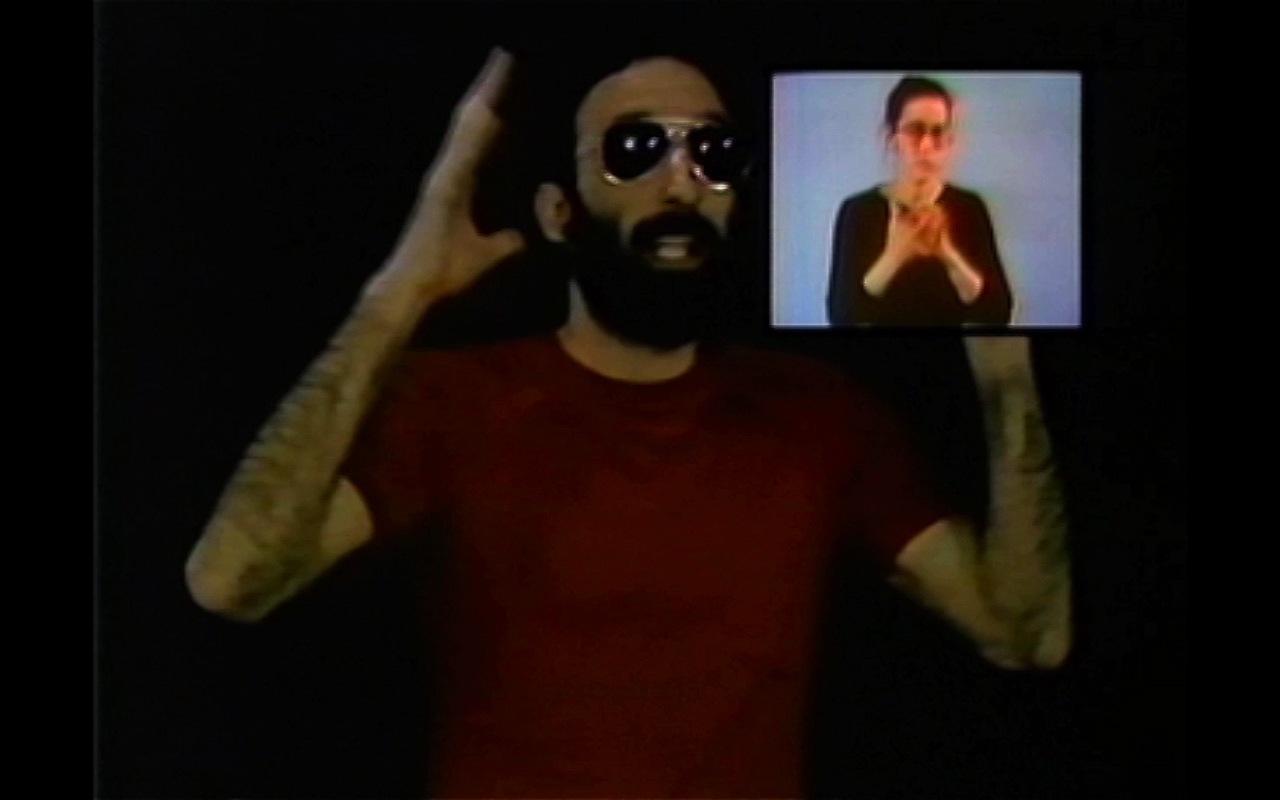
Peter Rose, The Pressures Of The Text, (video still), 1983 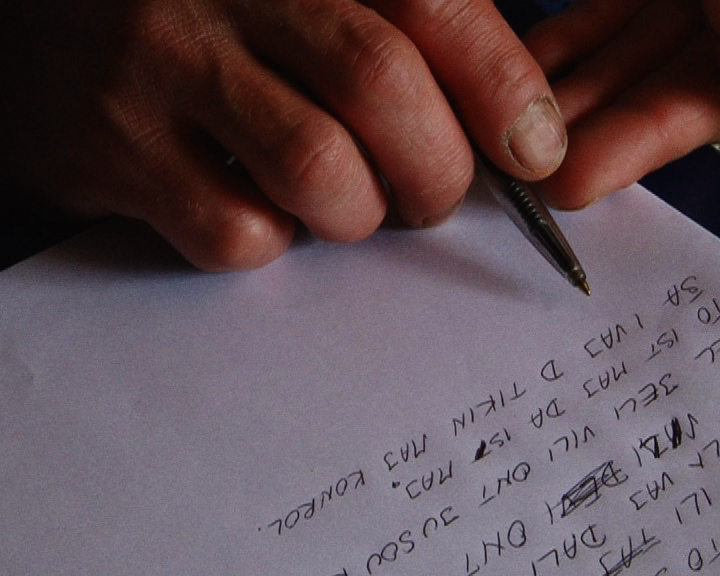
Katarina Zdjelar, Shoum, (video still), 2009 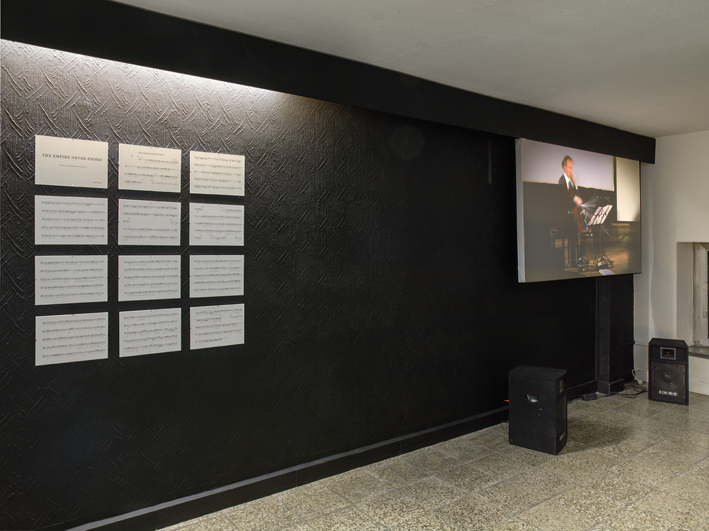
Erik Bünger, The Empire Never Ended, 2013, Installation view at Autocenter 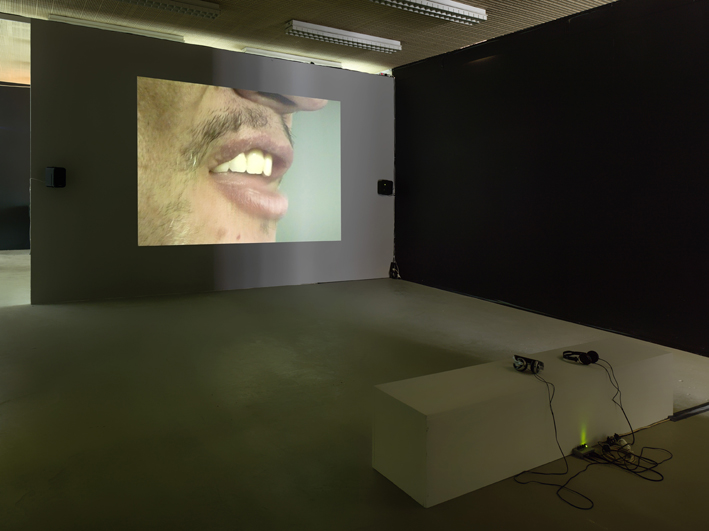
Katarina Zdjelar, The Perfect Sound, 2009, Installation view at Autocenter 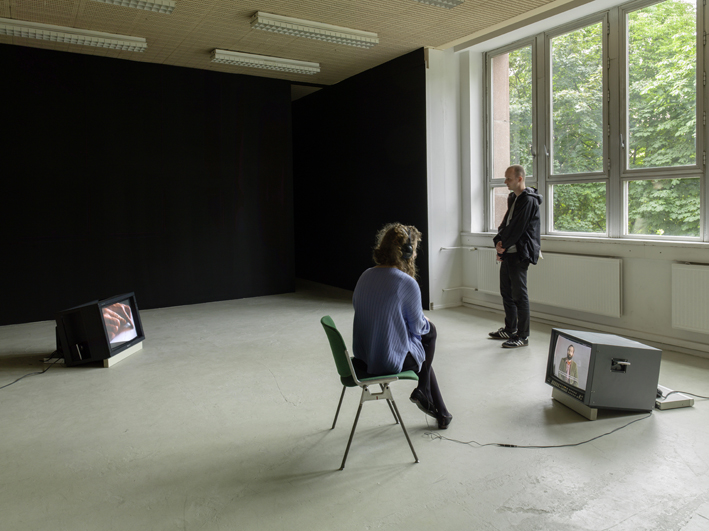
Katarina Zdjelar, Shoum, 2009 (left), Peter Rose, The Pressures Of The Text, 1983 (right), Installation view at Autocenter 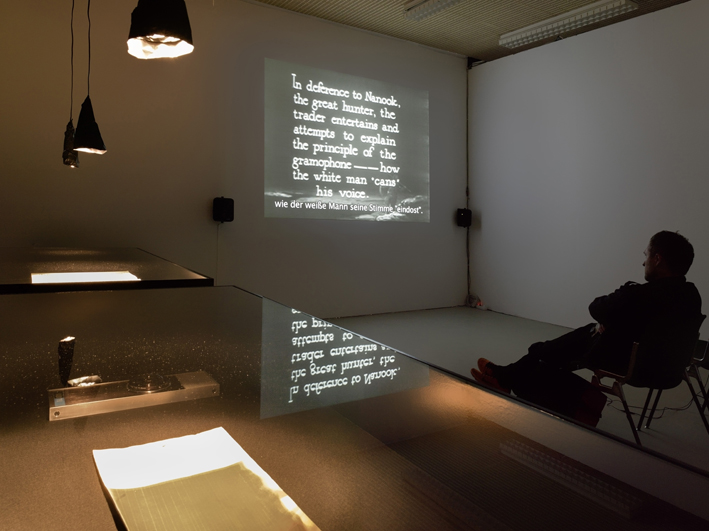
Erik Bünger, The Girl Who Never Was, 2014 (right), Written on Tablets of Flesh, 2014/2015, Installation view at Autocenter
With kind support from HMKV.